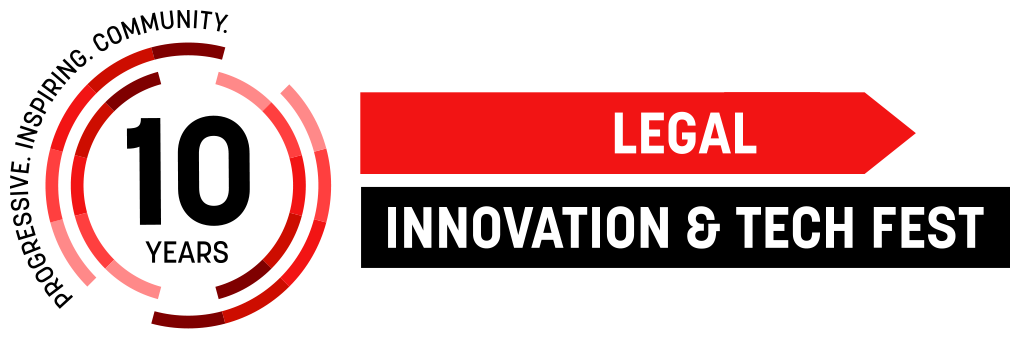How to Embed Innovation Into Your Law Firm’s Culture
)
Although I’m based in New York as Global Director of Innovation and Knowledge for US legal firm Paul Hastings, I’m originally a Sydney-sider (and a former lawyer). This is why it was such a pleasure to return home to present at Legal Innovation and Tech Fest 2019.
My work involves enhancing legal operations and driving innovation and major change projects across large organisations. At the conference in Sydney, I was able to share some of the innovation initiatives I run across over 20 offices of Paul Hastings. The presentation I gave focused on defining innovation and instilling an innovation mindset.
What is Innovation?
When I personally refer to innovation, I think of this:
Innovation means doing things in a different way, to achieve a better outcome
The meaning of innovation will vary from one firm to the next. If you’re motivated to introduce it to your workplace, you will need to have a discussion with senior leaders and stakeholders across your firm to decide what it means for your specific environment.
An approach I recommend is to avoid seeing innovation as the responsibility only of the innovation department, or indeed of any one department, at your firm.
Innovation belongs everywhere. Do some exploring and you will inevitably find innovation even where you did not expect it to sit. Your finance department could have introduced a clever new system. You could find your HR department has brought in something forward-thinking. Perhaps your learning and development team uses a video-based learning platform which is quite innovative, or they are recruiting in a novel way.
Bringing the people responsible for these projects together and encouraging communication across the functions will help you get a view into where your firm stands in terms of innovation, and can help you drive innovation more broadly across the firm.
Lawyers are Born Innovators
Everyone talks about the stereotypical lawyer personality, how resistant it is to change and how non-innovative that personality type is.
But when you think about it, the law is actually all about innovation; it’s about taking black letter law, interpreting it and analysing it so that it can be creatively applied to new fact patterns.
If you start talking about innovation as broader than technology, and bring it back to legal at its core, you’re going to engender an atmosphere where it is easier for you to leverage that and move into other types of innovation at your firm.
But pushing any widespread culture change is difficult. It can be particularly challenging when you want to change a culture to be more open to innovation in an industry where change has either side-stepped the firms we work at completely or is taking place very slowly.
Laying the Foundations for Change
As many of us are aware, creating cultural change and developing an innovative mindset doesn’t just happen. You have to plan for it and set a clear vision for what you want.
Driving an innovative mindset also requires a strategy around your vision, which you have to build support for at your firm. From there, you need to implement a framework, and seek buy-in from the top level.
If you feel you are in a firm or an organisation that is not currently open to innovation, the thought of going to your senior leadership and saying, “I need your support for this initiative,” might seem daunting. However, in today’s atmosphere, the top-level managers of your firm will know what is happening in the industry and should understand why innovation is valuable. Having a solid business case that refers to the value of innovation in the legal market today will help you. Consider the realistic return on your investment from your proposed initiative and put this in concrete terms. For example, think about increased efficiency, responsiveness to client requests, improved realization rates, and embed those benefits into your business case.
If you don’t get support across the board (and it’s unlikely you will on your first attempt), focus on leveraging the people who are motivated to create change – these are your change champions. Build an innovation committee made up of people who are in senior leadership and who are influential across your firm. Make it clear what the mandate of that committee is: to provide support for the innovation initiatives across the business.
A Three Step Innovation Process
Once you have buy-in, you need an action plan, and you have to keep at it.
Implementing and continuing to drive this mindset shift can be considered a three-step process, including education, engagement and execution.
Step 1: Education
Education is used to build awareness and create a sense of urgency. It’s a matter of explaining why the change is necessary. Saying “we need to change the culture” is not enough; you need to add “we need to change it for these reasons”.
The education component of your initiative should be multi-faceted. Think about using different media for educating people across the firm. One sure-fire way to get attention and buy-in is through distributing targeted information to your lawyers about what their competitors are doing on the legal innovation front. Creating a brief email with these types of details is far more likely to be digested by the partners in your firm than a generic newsletter about legal tech. Send a monthly message and use it to educate stakeholders, pique interest and garner support for initiatives.
Lawyers tend to be heads-down, busy billing hours; they’re not all attending legal innovation conferences on game-changing technology. To get the word across, hold events that incorporate demonstrations of new tools. Share the latest on the legal tech landscape, let them know about machine learning and natural language processing, help them understand what is happening in the market. Consider bringing in vendors to demonstrate their tools and serve cocktails or lunch as an incentive to attend. Ask those who have already implemented change internally to educate others about what they’re doing, why it works for them and how it assists them in their practice.
Video can also be a helpful tool. No matter what you’re using to drive innovation, be it a proof-reading tool or a data interpretation tool, get whoever is using it to create a short video which clearly explains how it works.
Approach educating your firm in a holistic way. Bring people together, get rid of silos, and put processes in place across departments to share ideas, simplify operations, and improve efficiency.
And don’t forget about the legal innovation side of things. If you can pick up on those seeds of creative work being done in your firm and disseminate it so other lawyers understand, you will get higher momentum on the non-legal innovation side.
Step 2: Engagement
Engagement is where you actually get your lawyers and your staff involved.
Get your IT department to set up an innovation inbox and promote it across the business. Let people know they can send even the simplest of ideas to a core innovation committee which is responsible for taking ideas and finding ways to implement them. Make sure you have thought about how you will graciously respond to people whose ideas are not practical right now – responding with a straight “no” may have the effect of chilling innovation at the firm, the opposite of the desired effect.
Ideas or innovations that are chosen to focus on can be piloted in your firm. To overcome the challenge of getting people involved, create an incentive, for example, billable-hour credit approval for spending time with a pilot, and recognition across the firm if the idea comes to fruition.
Another way you can incentivise involvement is to build it into performance evaluations and make it part of the fabric of an associate’s life cycle at the firm. When you come to evaluations, ask people what their involvement has been on innovation projects at the firm, and make it clear that they will be evaluated on whether or not they have participated in these initiatives.
It is known through research that innovation happens when we bring together people from different disciplines. Sit lawyers near your IT department, foster conversation, and you will start to see things happen.
Process optimisation exercises are another way to generate engagement from your lawyers. Run process optimising exercises and reduce the inefficiencies you find across practice groups. And don’t just do this once; be vigilant with regard to process. Train your team and the lawyers in your firm to actively think about identifying inefficiencies and consider how these can be reduced. Design thinking workshops are another excellent way to get lawyers involved in change and have them come up with the ideas that will solve the practical problems they are facing.
Keep an eye out across the firm for people who are already implementing better technology and systems. Take those processes that they put in place, leverage them and spread them across the department so that everyone is working in a more effective way.
Keep in mind that the idea behind engagement is to make your lawyers feel like they’re part of the change – or even that they have instigated it. This will go some way towards propelling your culture shift.
Step 3: Execution
The execution phase is where you take the ideas you’ve received, develop them, and do something about them.
Execution involves building solutions, rolling out new tools and disseminating the bright spots.
Find pockets of efficiency, map them out, and spread the word. Run cross-functional projects to leverage the expertise across the various departments at your firm.
Clients also come into your execution phase. You may have noticed clients asking about innovation in their RFPs. These clients want their firm to initiate discussions about new tools and processes that are more efficient and productive.
Once you start to build credibility within your firm internally, you will find it easier to get approval from relationship partners, and more acceptance from them to work directly with the firm’s clients. This is where you really want to get to: partner with clients, look at their processes and find ways to improve service delivery and to help them solve their own internal pain-points. Remember that when you get your first win in front of a client, it will open the door to further such engagements. Be prepared for the pace to pick up quickly at this stage, and resource your team accordingly.
Encouraging a Continued Path Towards Innovation
Change can be hard to see when it comes to innovation. To keep track, identify metrics at the beginning and record the changes you’re making.
Some changes can be tracked through data but often it’s a matter of speaking to your lawyers, understanding how they’re feeling, discussing pain-points and talking about the ideas that aren’t coming through.
By keeping an eye on things and tracking change, you’ll be able to demonstrate to every level of the firm how innovation is impacting the organisation.
Lastly, it’s worth pointing out that a culture shift is a massive undertaking. You’re changing people’s mindset, and you need to keep on it. If you employ the right strategy and put a framework in place, you will be able to affect change – but it will be a gradual process.
Build momentum, implement and iterate, track the changes that you’re making… and don’t give up on your quest to bring cultural change and an innovation mindset to your firm or organisation.
Hear more from leading innovators like Nicola at Legal Innovation & Tech Fest. Take two days to immerse yourself in the latest in legal innovation and technology from the best in the industry.
About the Author

Nicola Shaver is Global Director of Innovation and Knowledge at Paul Hastings, an international law firm with 22 offices worldwide. Nicola leads global teams who are focused on enabling practice excellence and optimizing client value through streamlining processes, curating and improving accessibility to critical legal content, implementing and leveraging the right tools and staffing models in support of all timekeepers at the firm

